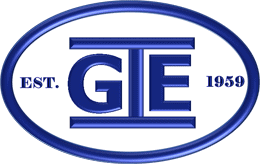Industrial Gearboxes 101 | Types & Applications
Leave a CommentAn industrial gearbox is a type of enclosed system responsible for transmitting mechanical energy to designated units. In the process, gearboxes control rotation speed and torque. Unlike standard gearboxes, industrial models feature a longer lifespan and improved safety mechanisms.
When selecting gearboxes for an application, it’s important to understand the different types and their uses.
The Different Types of Industrial Gearboxes
Depending on the needs of various applications, there are several types of industrial gearboxes available.
Explosion Proof Motors • A Selection Guide
Leave a CommentExplosion proof motors are designed to reduce or eliminate the risks traditional motors present in the presence of combustible materials. Traditional motors feature parts that can spark or generate too much heat in environments with dust and other flammable materials. This poses a significant fire risk that explosion proof motors are designed to negate by being able to fully contain internal explosions and prevent the ignition of larger, combustible atmospheres.
This guide will break down some of the different types of explosion proof motors to help you determine the right one for your facility.
UL Certification — UL674
UL674 is the UL industrial standard for “Electric Motors and Generators for Use in Hazardous (Classified) Locations.”[MAKE LINK OPEN IN NEW TAB] Motors designated as explosion proof should meet this standard’s testing criteria. UL performs a destructive test on each submitted motor to measure its ability to contain and mitigate explosions to different degrees. The results of the test determine which class, division, and group it falls in. This information is displayed on a UL listing identification plate, which is affixed to the motor’s enclosure.
Understanding Hazardous Location Classes, Divisions, and Groups
UL certified explosion proof motors fall into two distinct classes:
- Class I. These locations have vapor or gas in high enough concentrations to combust.
- Class II. These locations have combustible dust. Class II motors are designed to ensure that the ignition source of the motor and the combustible dust never interact. This means the motor can never reach or exceed the auto-ignition temperature of the dust.
These classes are further divided into different divisions, which include:
- Division 1. Division 1 locations contain combustible materials during normal operating conditions.
- Division 2. Division 2 locations contain combustible materials only during equipment malfunction.
For example, a Class I, Division 1 location contains combustible vapor or gas during normal operating conditions, whereas a Class I, Division 2 location contains combustible vapor or gas only during equipment faults.
The classes and divisions are further classified into groups based on the type of combustible materials present. Class I groups include:
- Group A. Acetylene
- Group B. Propylene oxide, hydrogen, ethylene oxide, butadiene, manufactured gases containing more that 30% hydrogen by volume
- Group C. Isoprene, cyclopropane, diethyl ether, acetaldehyde, ethylene
- Group D. Styrene, ammonia, acetone, methane, benzene, ethane, ethanol, butane, gasoline, propane
Class II groups include:
- Group E. Magnesium, aluminum, and other metal dusts with similar properties
- Group F. Coal
- Group G. Wheat flour, nylon, corn, polyethylene, wheat, sugar
If a UL listing identification plate indicates that a motor is a Class 1, Division 1, Group C and D explosion proof motor, that means it can prevent explosions in areas that contain Group C and D combustible materials during normal operating conditions.
Selecting the Best Explosion Proof Motor Type for Your Application
When determining the right explosion proof motor for your specific application, it’s important to determine the division and class of your environment. Your local safety authorities can help with this. If you have a Class I, Division 1 location, you need a motor that is fully capable of containing internal explosions. If you have a Class II, Division 1 location, it’s important to choose a motor with a casing that can keep the surface cool. Division I motors can handle both Divisions I and II locations, in the event of any doubt about your location’s identification.
Quality Explosion Proof Electric Motor Solutions
At GIE, we provide the following hazardous duty explosion proof motors:
Single-Phase Hazardous Duty Explosion Proof Motors
These motors are rated for Division I locations. Their single-phase design makes them best suited for general-purpose and residential applications.
Three Phase Hazardous Duty Explosion Proof Motors
Our hazardous duty three-phase motors are built to withstand more demanding operating conditions compared to general-purpose motors. All of these motors are suitable for Division I locations, but we also offer individual models that are suitable for Class I and Class II locations with Group C, D, E, F, and G hazardous materials. Their three-phase design makes them ideal for more extreme environments, such as factories and other industrial facilities.
Contact Us for Your Explosion Proof Motor Needs
Properly rated explosion proof motors keep your facility safe when spontaneous ignition and combustion are a risk. Contact us today to learn more about our available motors or request a quote for pricing details.

